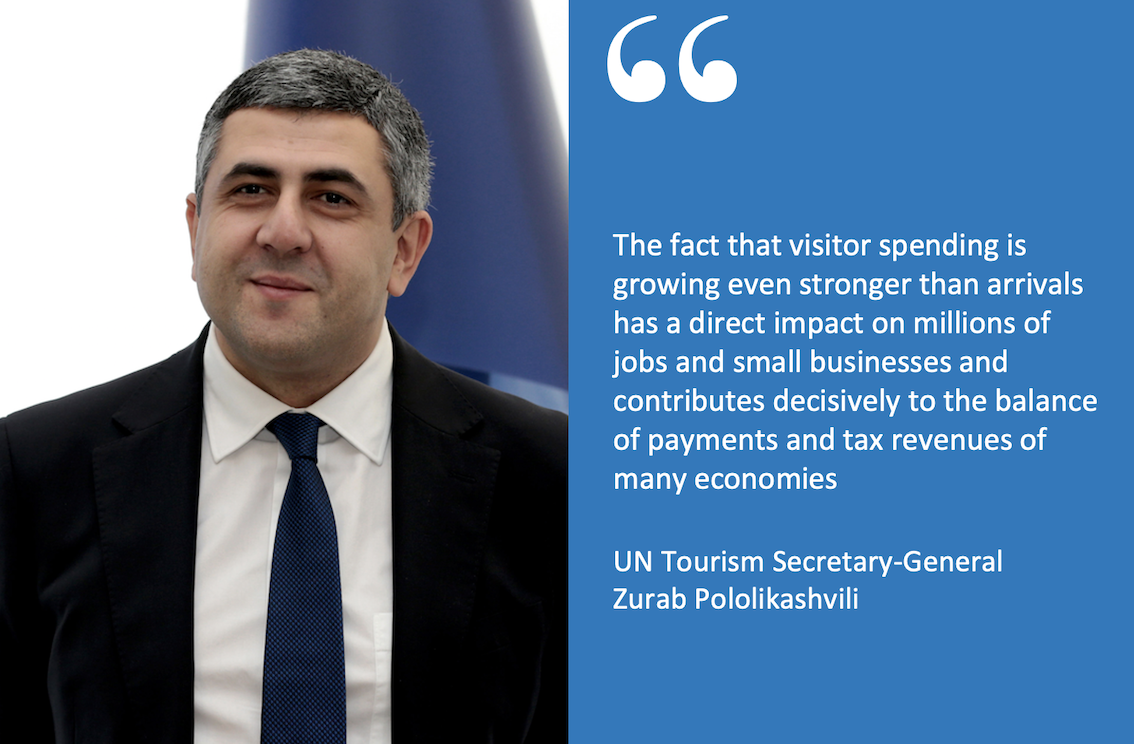INTERNATIONAL. Around 1.1 billion tourists travelled internationally in the first nine months of 2024, as the global tourism sector recovered to 98% of pre-pandemic levels.
According to the latest World Tourism Barometer by UN Tourism, a full recovery from the biggest crisis in the sector’s history is expected by the end of the year, despite economic, geopolitical and climate challenges.
The latest Barometer shows that most regions exceeded 2019 arrival numbers in the period from January to September 2024. The report also shows strong results in terms of international tourism receipts, with most destinations with available data posting double-digit growth compared to 2019.

International tourist arrivals growth was driven by strong post-pandemic demand in Europe and robust performance from large source markets globally, as well as the continuing recovery of destinations in Asia Pacific. Increased air connectivity and visa facilitation also supported international travel, said UN Tourism.
- The Middle East (+29% compared to 2019) continued to post record growth this nine-month period, while Europe (+1%) and Africa (+6%) also exceeded 2019 levels.
- The Americas recovered 97% of its pre-pandemic arrivals (-3% over 2019).
- Asia and the Pacific reached 85% of 2019 levels compared to a 66% recovery in 2023. Asia and the Pacific has experienced a gradual though uneven rebound in arrivals since the region reopened to international travel in 2023.
The summer season in the Northern Hemisphere was generally strong, with arrivals worldwide reaching 99% of pre-pandemic values in Q3 2024.
Some 60 out of 111 destinations surpassed 2019 arrival numbers in the first eight to nine months. Some of the strongest performers in arrivals during this period were Qatar (+141% versus 2019), Albania (+77%), Saudi Arabia (+61%), Curaçao (+48%), Tanzania (+43%), Colombia and Andorra (both +36%).
Tourism receipts soar
Some 35 out of 43 countries with available data on receipts exceeded pre-pandemic values in the first eight to nine months of 2024, many reporting double-digit growth compared to 2019 (in local currencies), well above inflation in most cases.
Among the best performers in terms of earnings were Serbia (+99% compared to the same months of 2019), as well as Pakistan (+64%), Romania (+61%), Japan (+59%), Portugal (+51%), Nicaragua and Tanzania (both 50%).
Among the world’s top earners, Japan (+59%), Türkiye (+41%) and France (+27%) all recorded double-digit growth through September 2024. Spain (+36%) and Italy (+26%) also reported strong visitor receipts, through August. The UK recorded +43% higher earnings, Canada +35% and Australia +18%, all through June 2024. The USA, the world’s top tourism earner, reported +7% growth through September.
Data on international tourism expenditure reflects the same trend, especially among large source markets such as Germany (+35% compared to 2019), the USA (+33%) and France (+11%).
Strong expenditure growth was also reported by the UK (+46%) Australia (+34%), Canada (+28%) and Italy (+26%), all through June 2024. Available data for India shows a surge in outbound spending from this increasingly important market, with +81% growth through June 2024 (versus 2019).
UN Tourism Secretary-General Zurab Pololikashvili said: “The strong growth seen in tourism receipts is excellent news for economies around the world. The fact that visitor spending is growing even stronger than arrivals has a direct impact on millions of jobs and small businesses and contributes decisively to the balance of payments and tax revenues of many economies.”
Recovery on track
While a large number of destinations already exceeded pre-pandemic arrival numbers in 2023, or have done so in 2024, there is still room for recovery across several subregions and destinations, noted UN Tourism.
A slower rebound in parts of North-East Asia and Central Eastern Europe contrasts with strong results in all other European sub-regions, the Middle East, Central America and the Caribbean, where arrivals have surpassed pre-pandemic values.
As in 2023, the year 2024 has seen strong export revenues from international tourism, due to higher average spending per trip (excluding the effects of inflation), partly the result of longer periods of stay.
Despite the generally strong results, several economic, geopolitical and climate challenges remain, noted the organisation.
UN Tourism said: “The tourism sector is still facing inflation in travel and tourism, namely high transport and accommodation prices, as well as volatile oil prices. Major conflicts and tensions around the world continue to impact consumer confidence, while extreme weather events and staff shortages are also critical challenges for tourism performance.” ✈











